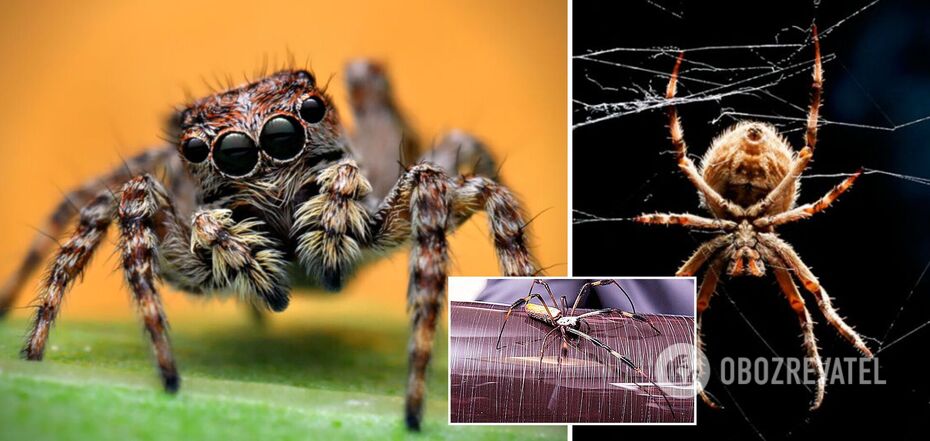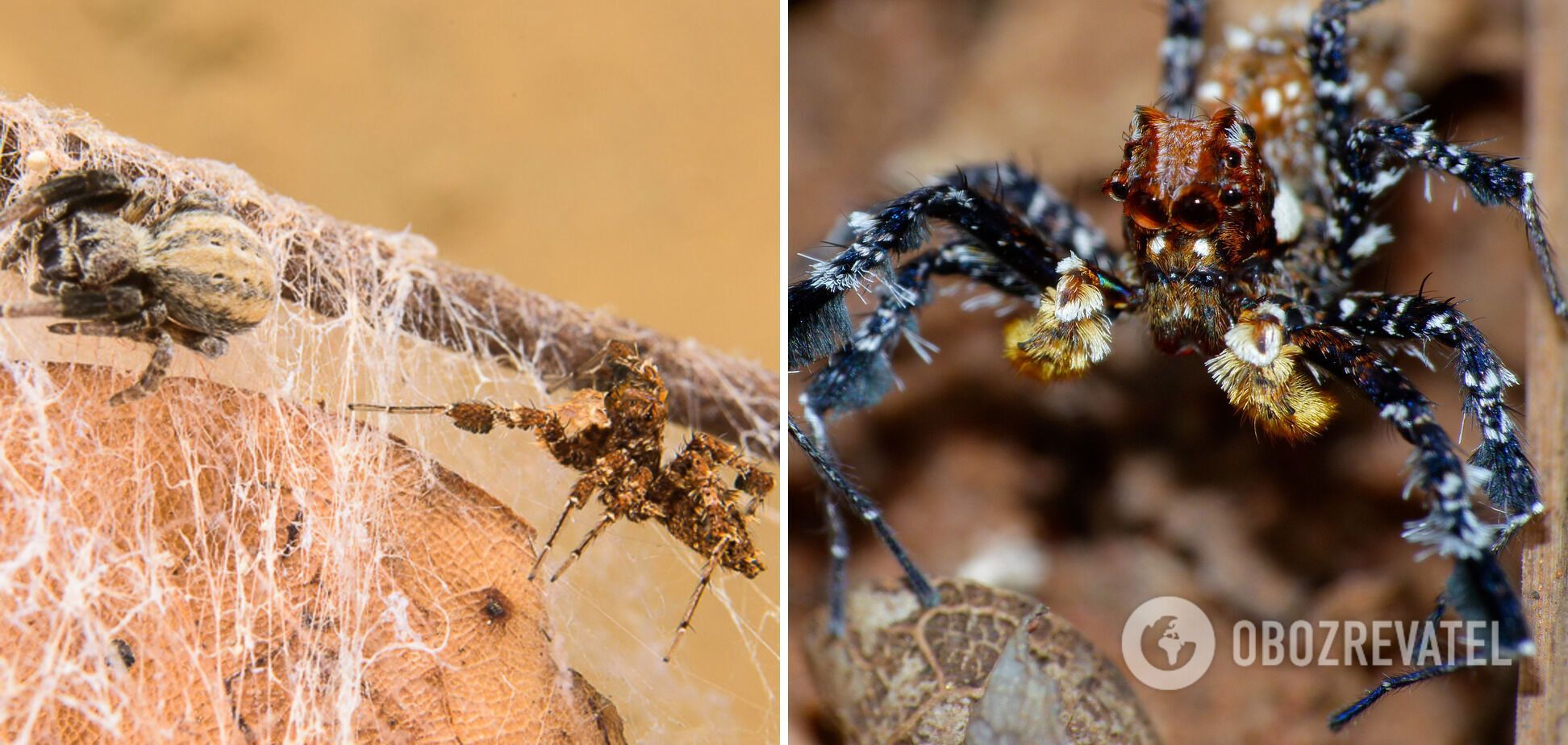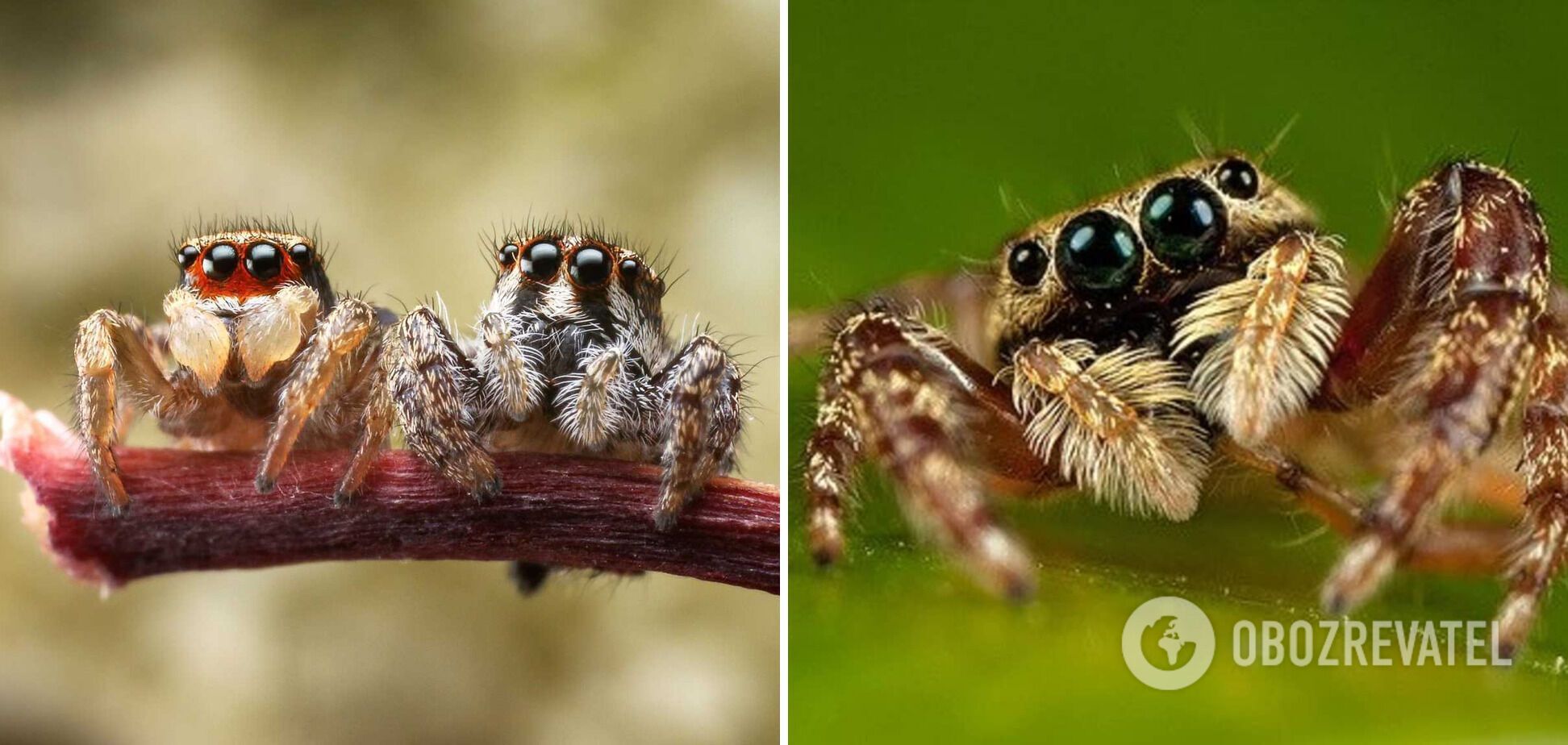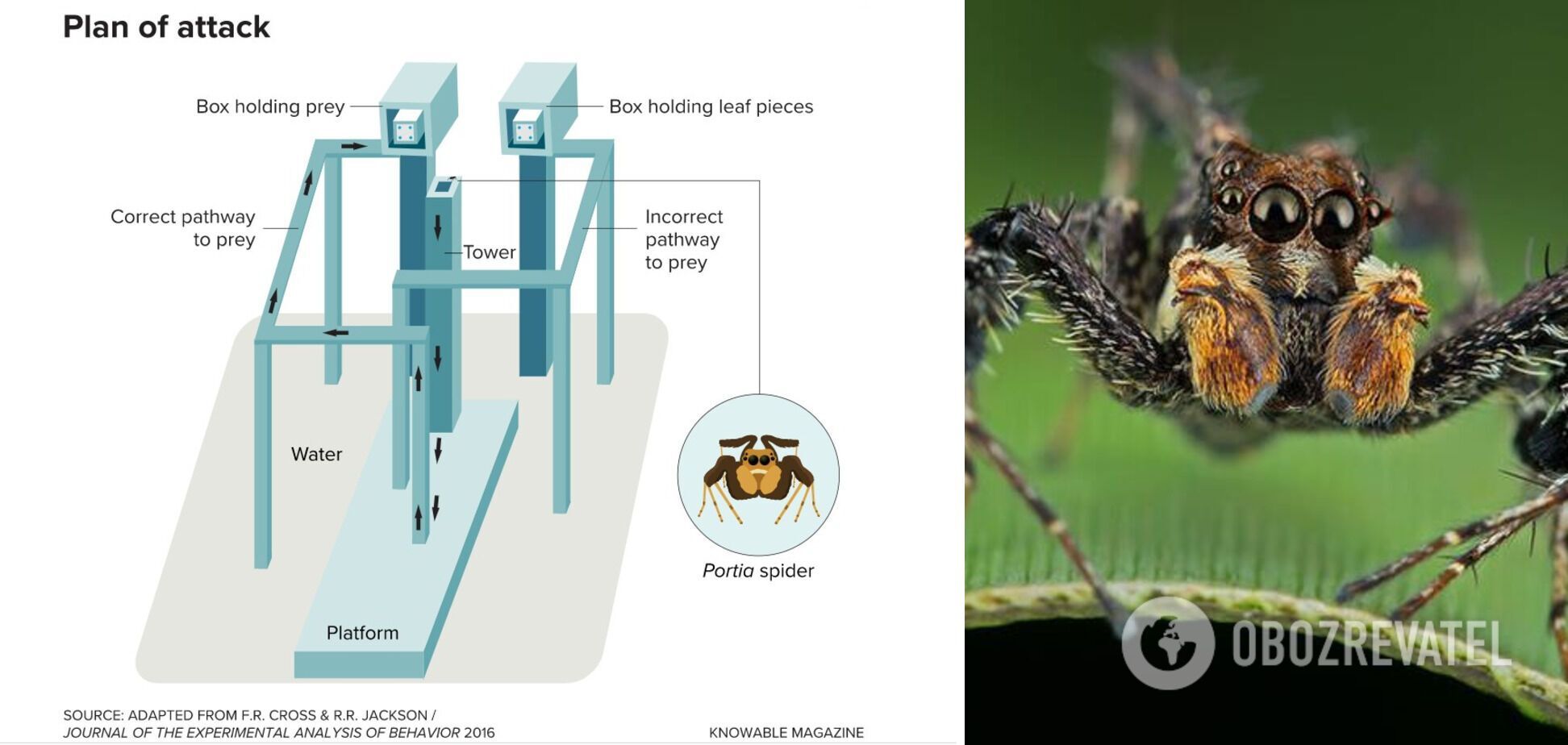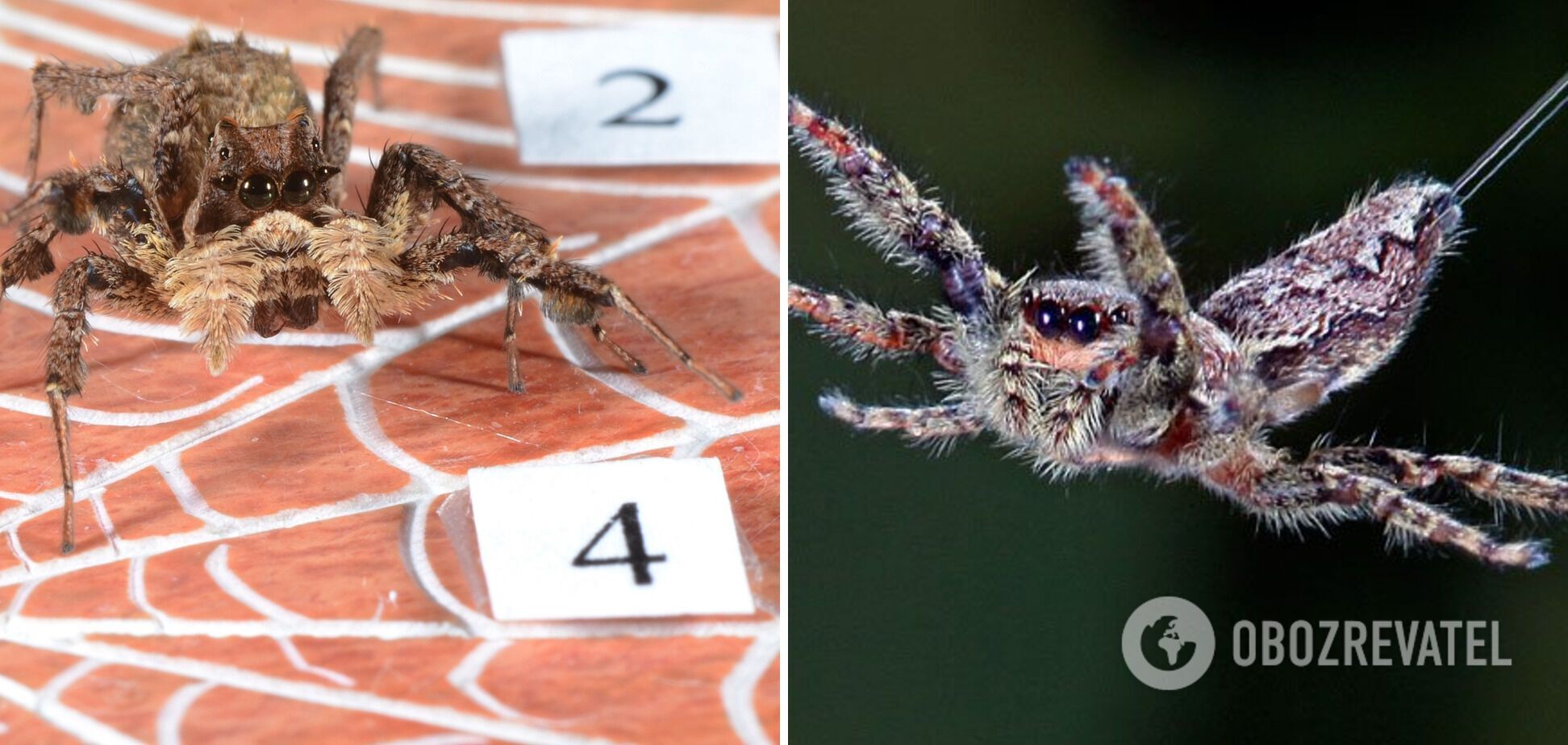News
Spiders have the intelligence of a child: scientists declare superpowers
Scientists have discovered several unexpected abilities in arachnids for such tiny creatures. It turned out that they are able to build complex strategies, wonder, analyze, and even count.
Knowable Magazine has told us about other things that surprised the scientific world and their impressive skills. For a long time, it was believed that intellectual abilities depend on the size of the brain. Humans, dolphins, and primates are classified as very intelligent species because they also have large brains. Based on this, many scientists assumed that tiny creatures were simply not capable of complex thought processes because of the size of their brains.
However, spiders have proven that things are not so simple. According to Dimitar Dimitrov, an arachnologist and evolutionary biologist from the University Museum of Bergen in Norway, it is a common belief that creatures that are too small cannot have powerful mental abilities, because this requires a certain mass of brain tissue. But he believes that spiders refute this stereotype because they are capable of amazing things.
According to him, many arachnids are characterized by "cognitive" behavior, which can be clearly distinguished from automatic reactions. As one of the authors of a study on the diversity of arachnids published this year in the Annual Review of Entomology, he gave several striking examples.
One of them is spider webs, which can build different webs depending on the prey they are waiting for. He also mentioned aniphymid spiders, which can be trained to associate rewards with the smell of vanilla.
"It's not so much the size of the brain that matters, but what the creature is able to do with what it already has," said arachnologist Fiona Cross of the University of Canterbury in Christchurch, New Zealand.
Jumping spiders are among the smartest arachnids
A scientist is studying jumping spiders, which she considers to be the most capable arachnids in terms of cognitive skills. Although the size of the brain of these tiny creatures is comparable to the size of a pin head, the scientists' experiments have shown that these arachnids show signs of intelligence. Moreover, their mental abilities are similar to those of dogs and children.
Representatives of the genus Portia are deservedly considered to be among the best hunters among arachnids, despite their tiny size, which can reach only 2.3 cm. While most arachnids wait for their prey in webs, Portia make plans to attack their prey, even using long detours. In addition, they take into account the type of their prey when building a strategy.
It is believed that this species of arachnid shows such high intellectual abilities due to its sharp eyesight, which is the best among creatures of such tiny size.
"Their eyesight has given them significant capabilities that allow them to explore their environment," explained researcher Ximena Nelson from the University of Canterbury. Jumping spiders are able to distinguish between victims, friends, and important objects in the area at great distances. Based on the data obtained, they are already analyzing whether and how to approach. The researcher believes that this is what allowed these creatures to develop their mental abilities so much.
Building complex strategies
According to Robert Jackson, a researcher of jumping spiders at the University of Canterbury, he found that many of the tactics of Portia are particularly cunning in the hunting strategies of arachnids.
These creatures use all their cunning when they hunt other spiders. For example, when they want to catch an arachnid weaving a web, Portia uses a particular technique. The spider pulls on several threads, which provokes the owner of the web to come to the right distance.
At the same time, if the jumper sees that its target is small enough, it starts shaking the web more violently, imitating the floundering of a trapped insect. This causes the predator to rush to its "prey," but in reality, it becomes a victim itself.
At the same time, if the spider is much larger than Portia, it pulls the strings more slowly, imitating the movements of a fly. As soon as the giant slowly approaches to see if the victim has fallen into its trap, a jumping spider suddenly rushes at it and attacks it with poisonous chews.
They also have another impressive strategy. If pulling the strings does not work and the victim remains in its hiding place, Portia begins to shake the entire web as if it were being swayed by the wind. These vibrations allow the arachnid to sneak up on its prey undetected.
Laboratory experiments shocked the scientist even more. It turned out that the spider uses different ways of pulling the strings, varying the intensity and force to find the exact combination that will fool a particular victim. This proves that these hunters learn while hunting.
Spiders are capable of creating complex routes
Scientists conducted an experiment to understand how Portia build such complex routes. To do this, a special platform surrounded by water was built in the laboratory (these spiders do not like to get wet), in the center of which was an observation tower from which the spider could see the other two towers. On each top there was a box, but one contained dead spiders - a real treat for a hunter - and the other was just fallen leaves.
The only way to get to the desired tower was to go down to the platform and choose the right one from the two paths. So the arachnids first examined the area in detail from the high tower. Only after analyzing the area did the spiders descend and choose the right path, and most of them chose the right path, even if it meant that they had to move away from the desired prey first.
The formation of a kind of map in the brain, which is the size of a poppy seed, can be considered an exceptional skill of spiders.
Spiders can be surprised
Experiments have also experimentally tested the idea that these spiders are able to use a mental image of what they see. To do this, they chose a simple psychological experiment, which is usually conducted with infants.
Just like children, spiders are unable to describe what is on their minds, so the point of the experiment is to understand whether the thing they are observing can surprise them.
To test this, the researchers built a special display case where they placed the Portia prey. First, the arachnids were shown a dew spider, which they watched for 30 seconds. Then the display case was closed and the victim was replaced with a spider, opening the curtain after 90 seconds.
It turned out that after the curtain was opened, when Portia saw a different victim, the likelihood of attacking it was significantly lower than when the prey remained the same. According to the scientists, this confirms that the spider had formed a mental understanding of the prey in its mind and already had certain expectations, but was surprised when the reality differed from the picture in its imagination.
The ability to count
Cross and Jackson conducted another experiment with a species of jumping spider, Portia Africana. To do this, they decided to modify the tower test. The arachnid was allowed to see several victims from the top of the tower. However, when the spider was already on its way and the prey was out of its sight, the number of victims was changed.
It turned out that when Portia saw one spider from the tower, and there were two or three spiders on the ground, the likelihood of an attack decreased. Interestingly, the same effect was observed when the spider initially saw two prey objects, but only one was found.
It is clear that arachnids are not capable of counting in the usual sense, but some of them may have a "sense" of quantity, much like humans.
Arachnids are able to analyze the situation
Although these spiders are predators themselves, they are threatened by other equally skillful hunters, and not only arachnids, but also birds, frogs, ants, and other creatures. As it turned out, these little smart guys are able to find a way out of dangerous situations.
The University of Canterbury laboratory organized an experiment to find out how these spiders can make escape plans. Despite the fact that Portia can swim, they do not like water. Therefore, the arachnid was placed on a platform surrounded by water. The task was to reach the edge by jumping from island to island, which were wooden pins. And in most cases, the spiders chose the safest route, which was also the shortest distance to the goal.
The scientists also noted that this test took Portia more time than other species of jumping spiders. In their opinion, this is due to the fact that the spiders sometimes spent more than a few hours analyzing the situation and studying the route. Only after assessing the risks did the arachnids start moving.
Who knows what other hidden abilities researchers will be able to discover in spiders. But even now, such tiny arachnids have shown amazing cognitive abilities. These few facts alone are already destroying the stereotype that the intellectual abilities of a living organism depend on the size of the brain.


